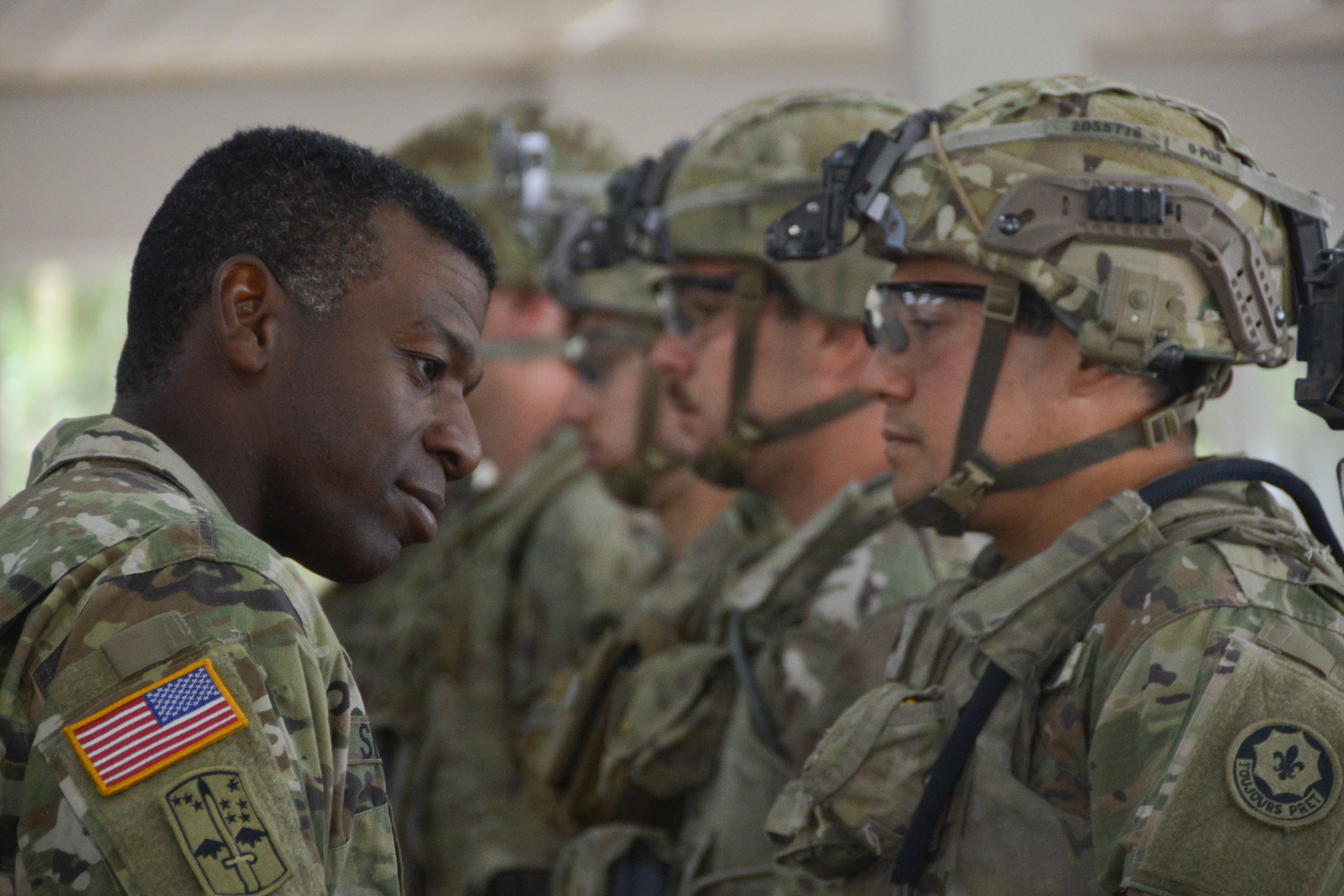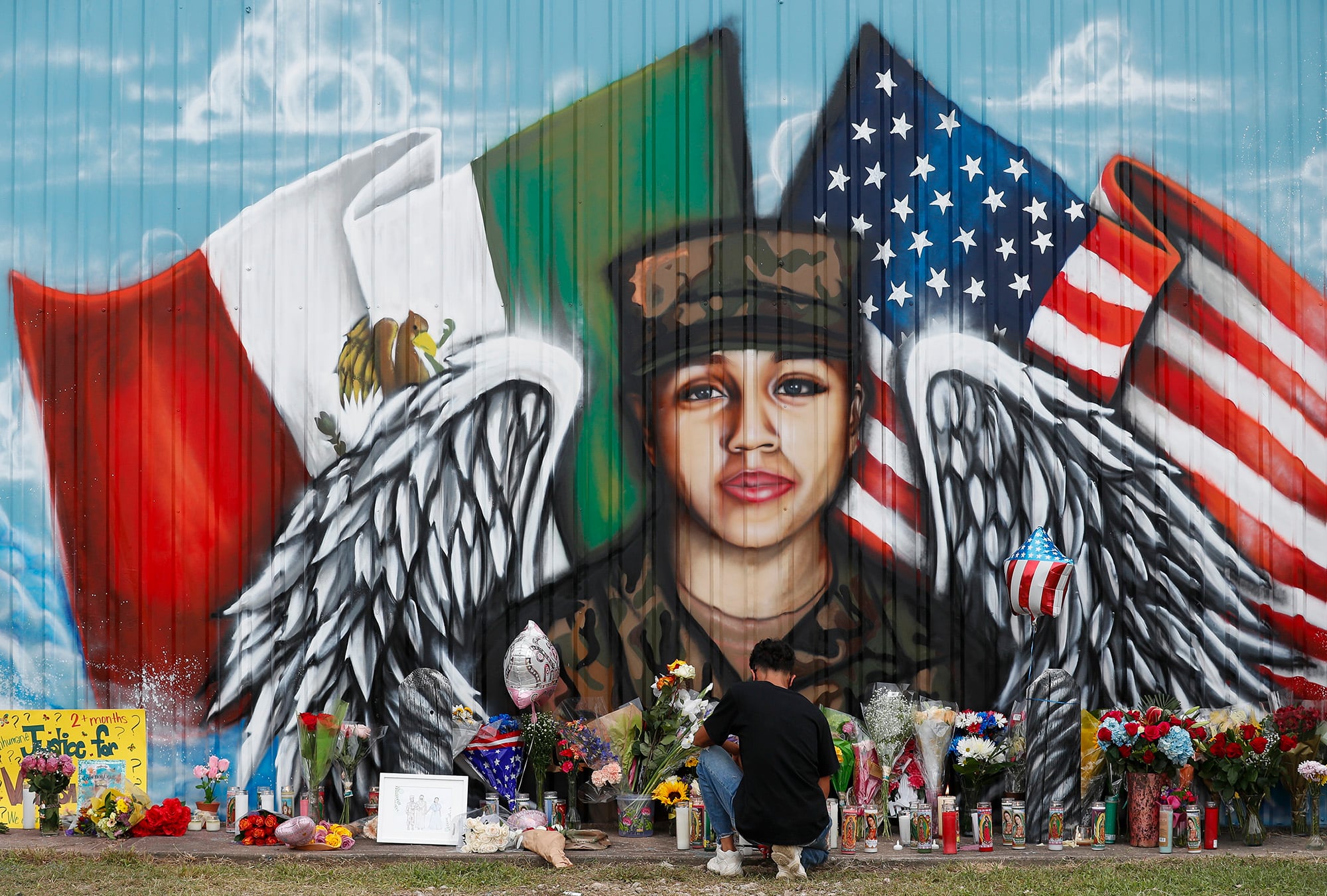As FBI and Army Criminal Investigation Command authorities continue to investigate the circumstances concerning the April 22 disappearance and subsequent killing of a young, female soldier, big Army is taking a broader look at the community where it happened.
Fort Hood, Texas, will be the subject of an independent command climate review, Army Secretary Ryan McCarthy told reporters Friday, to be headed up by Army Under Secretary James McPherson.
“The purpose of this independent review is to examine whether the command climate and culture at Fort Hood and the military community surrounding Fort Hood respects Army values — including respect, inclusiveness and workplaces free from sexual harassment and a commitment to diversity,” McPherson said.
In the course of the search for Spc. Vanessa Guillen, 20, and the subsequent response to the discovery of her remains on June 29, Twitter and other social media platforms lit up with stories of service members about their own sexual harassment, assault and intimidation while serving.
And Army senior leadership heard directly from personnel serving at Hood about the need to examine the command.
“There were concerns raised not just with sexual harassment, but other aspects as well, with regard to the greater community of Fort Hood and the surrounding community — raised by not only the Guillen family, but by the Hispanic community, and Congress as well,” McPherson said.
Fort Hood, its law enforcement entities and its leadership have become key characters in the larger investigation into Guillen’s death.
“I wouldn’t say every soldier in the Army has disdain for [III Corps] and those units at that installation,” Sergeant Major of the Army Michael Grinston told Army Times. “But there is some animosity that’s going on and that’s why we do need to do the independent review.”
A veteran of multiple rotations through Hood, most recently as III Corps’ chief of staff, Army Vice Chief of Staff Gen. Joseph Martin had a similar sentiment.
“What I’ll you is that every time that I served there, there was a command climate that was inclusive. There was a command climate that was fair and just,” he told Army Times. “I’m not saying that’s changed since then. What I’m saying is that, given what we know now, I think we need to take a look at that.”
And the reviews might not end with Fort Hood, McCarthy said. As part of the Army’s recently announced Project Inclusion, which aims to improve the experience of women and minorities in the service, research groups are visiting multiple posts to sit down with leaders and soldiers.
“If there are other places where we feel that there are climate issues, we will do independent reviews,” McCarthy said. “It won’t end with just Fort Hood.”
RELATED

The announcement came after McCarthy, McPherson and others met with Rep. Sylvia Garcia, D-Texas, as well as representatives from the League of United Latin American Citizens.
“We believe that these cases have exposed a systematic problem within the Army and other branches of the military,” Domingo Garcia, LULAC’s national president, said in a press conference on Capitol Hill.
“Thousands of women” have come forward about harassment, abuse and other mistreatment while serving, he added,
“That was the message we carried today to the secretary of the Army and other officials,” he said. “We believe that message has been heard.”
The investigation
The Army’s measured messaging about offering support to Guillen’s family and reaching out to the Latino community stops short of any language about holding those responsible to account, as proclamations about prosecution and punishment could be seen as undue influence by the chain of command, which would taint any criminal proceedings.
CID has shared few details publicly, as well, in order to protect the investigation’s integrity.
“We’re still gathering the facts. It takes time, the physics of this,” McCarthy said. “If we conclude with appropriate data that it is the case, in fact, that actions should have been taken differently, t hen we will take the accountability at any echelon.”
The Guillen family’s attorney, Natalie Khawam, has said that CID has shared with the family that Spc. Aaron Robinson, 20, who died by suicide as authorities attempted to arrest him ― as well as his girlfriend, Cecily Aguilar, 22, who has been charged in connection with Guillen’s death ― were both known to CID and questioned in the months between her disappearance and the discovery of her remains.
Fort Hood put out a media release June 29, announcing remains that could be Guillen’s had been discovered. The following day, Robinson broke a confinement order and left his barracks, fleeing post and later shooting himself, raising questions that CID bungled their chance to arrest him.
Addressing the issue of how Robinson was able to escape his confinement, Grinston explained that his barracks had multiple exits, despite a 24-hour front-desk presence that would have seen him trying to leave if he’d gone through the lobby.
Questions also remain about Hood’s initial investigation into Guillen’s disappearance, as a physical search of the post turned up few leads, and the soldier was designated absent-without-leave.
That label technically opens up resources for a broader search, and pulls up an alert if a soldier tries to return to post, for example.
“Unfortunately we actually do need to review our procedures for AWOL,” he said. “If we don’t flag any of the military police records and they were to pop up, then it’s actually a little more difficult to find them. I think we need to review that, but it actually helps us flag some of the records.”
In the meantime, Guillen’s family mounted a massive social media campaign to keep her name in the public arena, arguing that the Army was treating her as an absentee, rather than the victim of a crime.
The Justice Department charged Aguilar on July 2 with one count of conspiracy to tamper with evidence for her alleged role in helping Robinson discard Guillen’s body.
Meghann Myers is the Pentagon bureau chief at Military Times. She covers operations, policy, personnel, leadership and other issues affecting service members.




